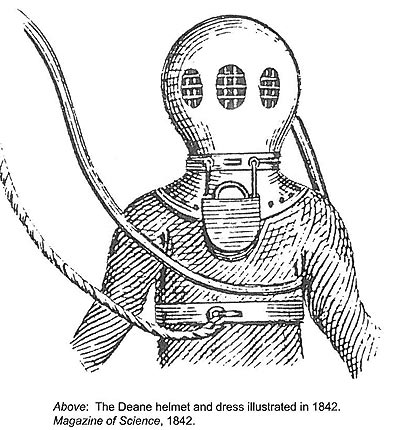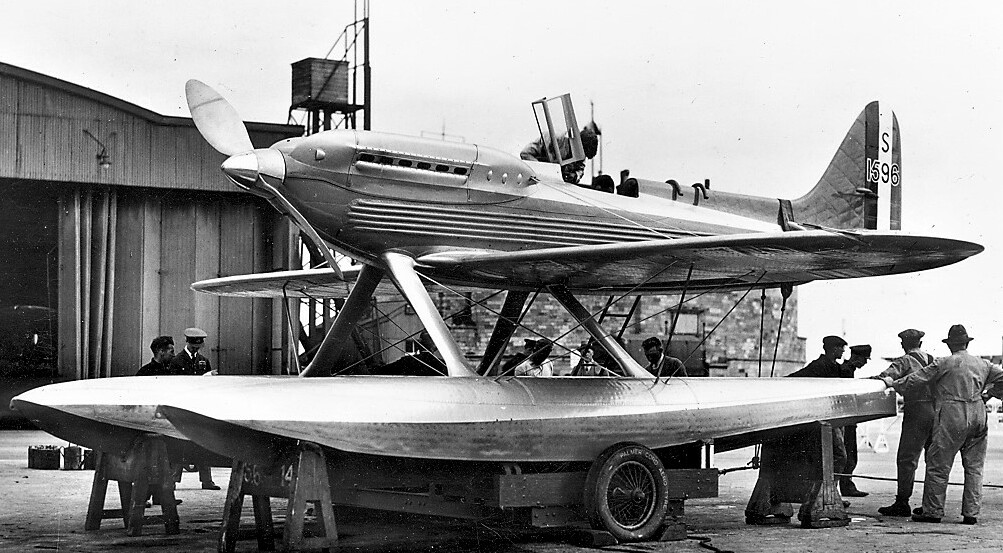|
SS Cayuga
SS ''Cayuga'' was a steel-hulled American package freighter in service between 1889 and 1895. She was built in 1889 in Cleveland, Ohio, by the Globe Iron Works Company for the Lehigh Valley Transit Company of Buffalo, New York. One of five identical sister ships, ''Cayuga'' entered service in 1889, carrying package freight between Buffalo and Chicago, Illinois, also making stops in Milwaukee, Wisconsin, and Gladstone, Michigan. Prior to her sinking, ''Cayuga'' was involved in two accidents. In the first in 1890, when she went aground in a gale just outside of Buffalo harbour; six tugboats managed to pull her free that same day. The second accident occurred in 1891, when ''Cayuga'' was involved in a collision with the package freighter ''Delaware'' near Cheboygan, Michigan. On the morning of May 10, 1895, ''Cayuga'' while bound for Buffalo with a cargo of oats, flour and general merchandise. A thick fog hung over Lake Michigan. As ''Cayuga'' neared Ile Aux Galets, her crew ... [...More Info...] [...Related Items...] OR: [Wikipedia] [Google] [Baidu] |
Slipway
A slipway, also known as boat ramp or launch or boat deployer, is a ramp on the shore by which ships or boats can be moved to and from the water. They are used for building and repairing ships and boats, and for launching and retrieving small boats on trailers towed by automobiles and flying boats on their undercarriage. The nautical terms ways and skids are alternative names for slipway. A ship undergoing construction in a shipyard is said to be ''on the ways''. If a ship is scrapped there, she is said to be ''broken up in the ways''. As the word "slip" implies, the ships or boats are moved over the ramp, by way of crane or fork lift. Prior to the move the vessel's hull is coated with grease, which then allows the ship or boat to "slip" off of the ramp and progress safely into the water. Slipways are used to launch (newly built) large ships, but can only dry-dock or repair smaller ships. Pulling large ships against the greased ramp would require too much force. Therefor ... [...More Info...] [...Related Items...] OR: [Wikipedia] [Google] [Baidu] |
Cleveland, Ohio
Cleveland ( ), officially the City of Cleveland, is a city in the U.S. state of Ohio and the county seat of Cuyahoga County. Located in the northeastern part of the state, it is situated along the southern shore of Lake Erie, across the U.S. maritime border with Canada, northeast of Cincinnati, northeast of Columbus, and approximately west of Pennsylvania. The largest city on Lake Erie and one of the major cities of the Great Lakes region, Cleveland ranks as the 54th-largest city in the U.S. with a 2020 population of 372,624. The city anchors both the Greater Cleveland metropolitan statistical area (MSA) and the larger Cleveland–Akron–Canton combined statistical area (CSA). The CSA is the most populous in Ohio and the 17th largest in the country, with a population of 3.63 million in 2020, while the MSA ranks as 34th largest at 2.09 million. Cleveland was founded in 1796 near the mouth of the Cuyahoga River by General Moses Cleaveland, after whom the city was named ... [...More Info...] [...Related Items...] OR: [Wikipedia] [Google] [Baidu] |
USS Michigan (1843)
USS ''Michigan'' was the United States Navy's first iron-hulled warship and served during the American Civil War. She was renamed USS ''Wolverine'' in 1905. Construction and design The side wheel steamer ''Michigan'' was built in response to the British Government arming two steamers in response to the Canadian rebellions in the late 1830s with Secretary of the Navy Abel P. Upshur selecting an iron hull partly as a test of practicability of using such a "cheap and indestructible a material" for ships. The ship was designed by Samuel Hartt, and fabricated in parts at Pittsburgh in the last half of 1842, transported overland and assembled at Erie. The launch on 5 December 1843 was unsuccessful with the ship sticking after moving some down the ways and efforts to complete the launch ended by nightfall. On returning in the morning Hartt found ''Michigan'' had "launched herself in the night" and was floating offshore in Lake Erie. By 1908 the ship was noted in the journal ''The Am ... [...More Info...] [...Related Items...] OR: [Wikipedia] [Google] [Baidu] |
Standard Diving Dress
Standard diving dress, also known as hard-hat or copper hat equipment, deep sea diving suit or heavy gear, is a type of diving suit that was formerly used for all relatively deep underwater work that required more than breath-hold duration, which included marine salvage, civil engineering, pearl shell diving and other commercial diving work, and similar naval diving applications. Standard diving dress has largely been superseded by lighter and more comfortable equipment. Standard diving dress consists of a diving helmet made from copper and brass or bronze, clamped over a watertight gasket to a waterproofed canvas suit, an air hose from a surface-supplied manually operated pump or low pressure breathing air compressor, a diving knife, and weights to counteract buoyancy, generally on the chest, back and shoes. Later models were equipped with a diver's telephone for voice communications with the surface. The term ''deep sea diving'' was used to distinguish diving with this equi ... [...More Info...] [...Related Items...] OR: [Wikipedia] [Google] [Baidu] |
Crane Vessel
A crane vessel, crane ship or floating crane is a ship with a crane specialized in lifting heavy loads. The largest crane vessels are used for offshore construction. Conventional monohulls are used, but the largest crane vessels are often catamaran or semi-submersible types as they have increased stability. On a sheerleg crane, the crane is fixed and cannot rotate, and the vessel therefore is manoeuvered to place loads. History In medieval Europe, crane vessels which could be flexibly deployed in the whole port basin were introduced as early as the 14th century. During the age of sail, the sheer hulk was used extensively as a floating crane for tasks that required heavy lift. At the time, the heaviest single components of ships were the main masts, and sheer hulks were essential for removing and replacing them, but they were also used for other purposes. Some crane vessels had engines for propulsion, others needed to be towed with a tugboat. In 1920, the 1898-built battles ... [...More Info...] [...Related Items...] OR: [Wikipedia] [Google] [Baidu] |
Float (nautical)
Floats (also called pontoons) are airtight hollow structures, similar to pressure vessels, designed to provide buoyancy in water. Their principal applications are in watercraft hulls, aircraft floats, floating pier, pontoon rhinos, pontoon causeways, and marine engineering applications such as salvage. During World War II the United States Navy Civil Engineer Corps developed a modular steel box (pontoon) for the Seabees to use. It was an industrial sized Lego system of pre-drilled pre-cut angle iron and steel plate that could be assembled anywhere for which they became famous. They used them to facilitate amphibious landings. With the pontoons Seabees assembled docks, causeways, and rhinos to whatever size needed. They allowed landings on Sicily where no one thought possible. They ferried Patton across the Rhine and put the Marines ashore on Okinawa. They would be used during the Korean War in the landing at Inchon in 1950 and again in Lebanon during the 1958 Leban ... [...More Info...] [...Related Items...] OR: [Wikipedia] [Google] [Baidu] |
Decompression Sickness
Decompression sickness (abbreviated DCS; also called divers' disease, the bends, aerobullosis, and caisson disease) is a medical condition caused by dissolved gases emerging from solution as bubbles inside the body tissues during decompression. DCS most commonly occurs during or soon after a decompression ascent from underwater diving, but can also result from other causes of depressurisation, such as emerging from a caisson, decompression from saturation, flying in an unpressurised aircraft at high altitude, and extravehicular activity from spacecraft. DCS and arterial gas embolism are collectively referred to as decompression illness. Since bubbles can form in or migrate to any part of the body, DCS can produce many symptoms, and its effects may vary from joint pain and rashes to paralysis and death. DCS often causes air bubbles to settle in major joints like knees or elbows, causing individuals to bend over in excruciating pain, hence its common name, the bends. Individu ... [...More Info...] [...Related Items...] OR: [Wikipedia] [Google] [Baidu] |
Bay City, Michigan
Bay City is a city and county seat of Bay County in the U.S. state of Michigan, located near the base of the Saginaw Bay on Lake Huron. As of the 2010 census, the city's population was 34,932, and it is the principal city of the Bay City Metropolitan Statistical Area, which is included in the Saginaw-Midland-Bay City Combined Statistical Area. The city, along with nearby Midland and Saginaw, form the Greater Tri-Cities region of Central Michigan. The city is geographically divided by the Saginaw River, and travel between the east and west sides of the city is made possible by four modern bascule-type drawbridges: Liberty Bridge, Veterans Memorial Bridge, Independence Bridge, and Lafayette Avenue Bridge, which allow large ships to travel easily down the river. The city is served by MBS International Airport, located in nearby Freeland, and James Clements Municipal Airport. History Leon Tromblé is regarded as the first settler within the limits of Bay County, in an area w ... [...More Info...] [...Related Items...] OR: [Wikipedia] [Google] [Baidu] |
Glossary Of Nautical Terms
This glossary of nautical terms is an alphabetical listing of terms and expressions connected with ships, shipping, seamanship and navigation on water (mostly though not necessarily on the sea). Some remain current, while many date from the 17th to 19th centuries. The word nautical derives from the Latin ''nauticus'', from Greek ''nautikos'', from ''nautēs'': "sailor", from ''naus'': "ship". Further information on nautical terminology may also be found at Nautical metaphors in English, and additional military terms are listed in the Multiservice tactical brevity code article. Terms used in other fields associated with bodies of water can be found at Glossary of fishery terms, Glossary of underwater diving terminology, Glossary of rowing terms, and Glossary of meteorology. This glossary is split into two articles: * terms starting with the letters A to L are at Glossary of nautical terms (A-L) * terms starting with the letters M to Z are at Glossary of nautical terms (M-Z). __NO ... [...More Info...] [...Related Items...] OR: [Wikipedia] [Google] [Baidu] |
Ile Aux Galets
Ile Aux Galets, also known as ''Skillagallee'' or ''Skillagalee Island'', is located in northeast Lake Michigan, between Beaver Island and the mainland, approximately northwest of Cross Village in Emmet County, Michigan. The island's Ile Aux Galets Light warns passing ships of a dangerous gravel shoal extending almost to the east and to the northwest, that poses an imminent hazard to navigation. History The islet is home to a significant colony of ring-billed gulls. Its name, given by early French explorers, means "Isle of Pebbles." It is said that the English speakers found the French name unpronounceable, and "Ile aux Galets"—soon misheard, misunderstood and mispronounced—transmuted into "Skillagalee" (or some variant) which took hold. By the "mid 1800s references to the original French name all but disappeared." This is similar to t ... [...More Info...] [...Related Items...] OR: [Wikipedia] [Google] [Baidu] |
Cheboygan, Michigan
Cheboygan ( ) is a city in the U.S. state of Michigan. As of the 2010 census, the city population was 4,876. It is the county seat of Cheboygan County. The name of the city shares the name of the county and probably has its origin from the Cheboygan River, although the precise meaning is no longer known. It may have come from an Ojibwe word ''zhaabonigan'' meaning "sewing needle". Alternatively, the origin may have been "Chabwegan," meaning "a place of ore." The city is at the mouth of the Cheboygan River on Lake Huron. U.S. Highway 23 (US 23) connects with Interstate 75 (I-75) at Mackinaw City and the Mackinac Bridge, about to the northwest. Rogers City is about to the southeast. M-27 runs south from the city along the north shore of Mullett Lake to I-75 at Indian River about to the southwest. M-33 runs due south along the east shore of Mullett Lake to M-68 about to the south. History Cheboygan was originally an Ojibwe settlement. In 1844, Jacob Sammons, ... [...More Info...] [...Related Items...] OR: [Wikipedia] [Google] [Baidu] |
Gladstone, Michigan
Gladstone is a city in Delta County in the Upper Peninsula of the U.S. state of Michigan. First settled in 1877, Gladstone's original name was Minnewasca. The population was 4,973 at the 2010 census. U.S. Highways 2 and 41 run concurrently through the city, connecting with Escanaba, nine miles (14 km) to the south. US 41 runs north to Marquette and US 2 runs east to Manistique and St. Ignace. M-35 runs northwest to Gwinn and merges with US 2/US 41 south to Escanaba. History First Inhabitants The first people to occupy the Upper Peninsula of Michigan were Algonquin speaking peoples. Gladstone was first settled by European descendants in 1859 when the Hamilton Corporation of Fayette began using it as a shipping point for selling and transporting of their iron ore. The town was originally named Minnewasca by the Soo Line Railroad, the Ojibwa name meaning "white water." When the name was filed with the county and Secretary of State in Lansing, Senator W. D. Washbu ... [...More Info...] [...Related Items...] OR: [Wikipedia] [Google] [Baidu] |

_001.jpg)




.png)

